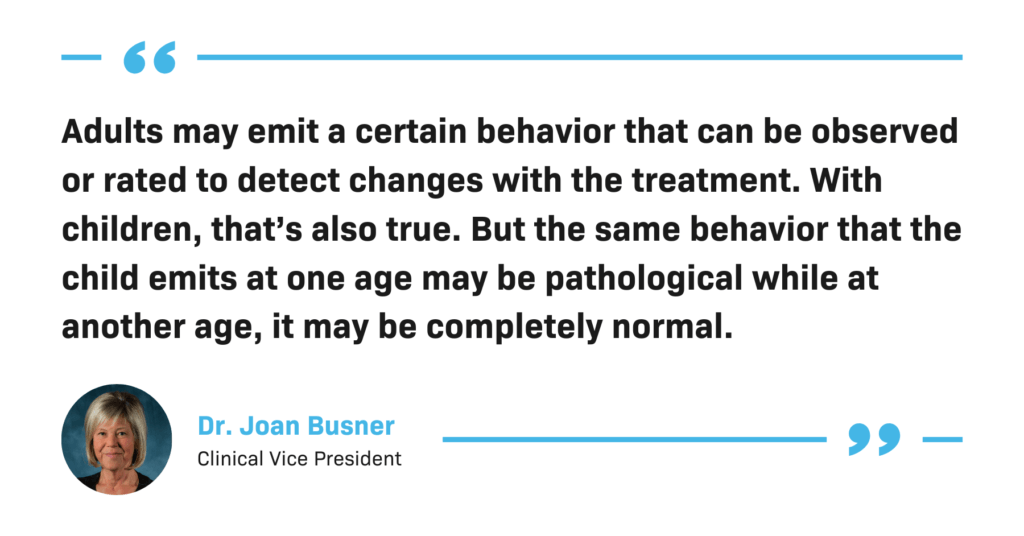Clinical Viewpoints: Optimizing Pediatric Trials for High-Quality Data

Signant recently debuted a new video series, Clinical Viewpoints, in which our Science and Medicine leadership team shares key insights for trial optimization across a range of therapeutic areas and indications. If you haven’t had a chance to tune into the first episode yet with Dr. Joan Busner, Signant’s Clinical Vice President and expert in pediatric and orphan diseases, we’ve summarized the key takeaways right here for you.
The series is hosted by our Chief Medical Officer, Dr. Dawie Wessels, who kicks off this episode by describing challenges that are unique to pediatric trials, including:
- Obtaining informed consent from child patients or their caregivers
- Collecting clinical outcome assessments that are appropriate for and understood by the patient population, or appropriate for caregiver completion
- Mitigating high placebo response rates, which are common in these trials
Dr. Wessels then asks Dr. Busner to talk through some differences between pediatric versus adult trials when considering successful trial design and execution.
Dr. Busner notes that pediatric trials are different, special, and can pose many unique challenges. There is a heightened sense of scrutiny for children as a vulnerable patient population, and it must be clear to all stakeholders from the start that the well-being and safety of the child is paramount. In addition, she notes, measures must be understandable, consent/assent tools must be customized with media that can engage the interest and attention of a child, and procedures and visit lengths must take the child’s age and cognitive/physical capabilities into account. Dr. Busner also reminds us that unlike adult trials, a child’s participation in a trial is often decided by someone else, usually a caregiver or parent. So, she emphasizes the importance of making the child feel empowered as a partner in the research to gain the family’s active participation, and notes that the child’s understanding and assent is a key aspect of ensuring good quality data, aside from ethical requirements.

In pediatric trials, Dr. Busner flags that age and cognitive differences make things “infinitely more complex and harder to standardize,” so it is crucial to select expert investigative sites and then calibrate them through a thorough and thoughtful training program to ensure consistent ratings.
“We also find a lot of differences in the outcome measures themselves and how you’re going to assess whether the treatment is working,” Dr. Busner says. “Adults may emit a certain behavior that can be observed or rated to detect changes with the treatment. With children, that’s also true. But the same behavior that the child emits at one age may be pathological while at another age, it may be completely normal.”
Dr. Busner goes on to say that high placebo response rates are a notorious challenge in pediatric trials and describes the extra measures that should be considered to mitigate against this. Placebo response training for site staff can help investigators standardize their patient interactions and counter the “good patient” role that children may feel obligated to play, since they often try to be agreeable by reporting good news and saying they feel better. She stresses the importance of using child-friendly language and direct-to family training tools to give children explicit permission to report how they’re actually feeling –whether it’s better, worse, or the same.
Finally, and especially true for pediatric rare disease trials, Dr. Busner notes the value of establishing consensus via sensitive training programs since calibration and standardization are difficult in these conditions but critical to signal detection. She notes that rater training programs, such as those offered by Signant, can help raters administer scales in the “most standardized, objective, valid way possible,” but flags that it’s always a challenge to obtain consensus that will carry through to the actual trial. “There is an art to doing this and we take great pains to be very, very careful in how we accomplish this. Otherwise, people will listen to you with a frozen smile,” Dr. Busner said. “We respectfully bring together leading KOLs and investigators to help them appreciate that it’s for the good of the trial and its patients, so that we can all agree on standardization.”
Curious to hear more of Dr. Busner’s insights? You can watch the entire episode below. For more on our pediatric trial expertise, access resources here.


.png?width=363&height=228&name=blog%20image%2033%20(3).png)
